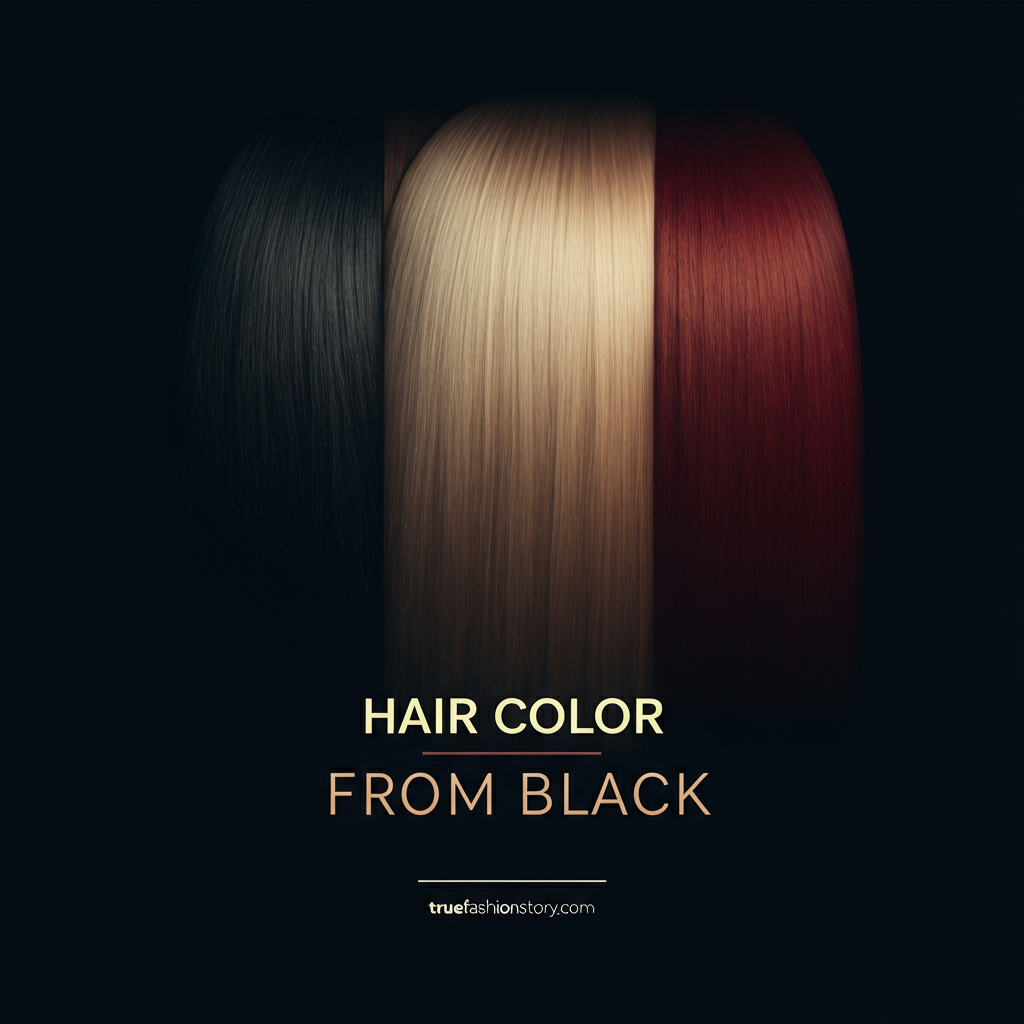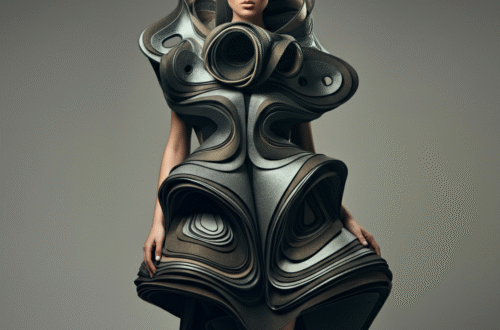Changing your hair color is one of the most exciting ways to refresh your look. However, going from dark to light can feel like a major challenge. If you’re starting with black hair, you might have a lot of questions about the process. The good news is that getting a new hair color from black is entirely possible with the right approach and a little patience.
This guide will walk you through everything you need to know. We’ll cover the preparation, the lightening process, choosing your new shade, and how to keep your hair healthy afterward. Whether you dream of being a blonde, a redhead, or rocking a vibrant fashion color, your hair transformation journey starts here.
Key Takeaways
- Transforming your hair color from black requires a multi-step process, usually involving bleach to lift the existing dark pigment.
- Patience is crucial. Achieving your desired color may take multiple sessions to protect your hair’s health.
- Proper preparation and aftercare are essential for minimizing damage and keeping your hair strong and vibrant.
- Both professional salon services and at-home kits are options, each with distinct pros and cons.
- Understanding your hair’s history (virgin vs. previously colored) will determine the best approach for your transformation.
Understanding the Challenge of Hair Color From Black
So, why is changing your hair color from black considered such a big deal? It comes down to the science of hair color. Black hair, whether natural or dyed, is packed with dark pigment molecules. To achieve a lighter shade, you first need to remove that pigment. This isn’t as simple as applying a new color on top; a new shade won’t show up on a dark base.
The process requires a lightening agent, most commonly bleach, to lift the dark color out of your hair strands. This step is the most critical and potentially damaging part of the process. It chemically alters the hair shaft to break down the melanin (natural pigment) or dye molecules. The amount of lifting needed depends on how light you want to go. For example, moving to a light brown requires less lift than aiming for platinum blonde. Because of the strength of the chemicals involved, it’s vital to prioritize the health of your hair above all else. Rushing the process can lead to breakage, dryness, and an uneven result.
Preparation Is Key: Getting Your Hair Ready
Before you even think about mixing bleach, you need to prepare your hair. Strong, healthy hair will always handle the coloring process better than hair that is already dry or damaged. Think of this as the foundation for a successful hair color from black transformation.
Deep Conditioning Treatments
Start deep conditioning your hair at least once a week for a few weeks leading up to your appointment or at-home session. This infuses your strands with moisture and nutrients, making them more resilient. Look for treatments containing ingredients like keratin, argan oil, or shea butter. A well-moisturized hair cuticle is less likely to become brittle and snap during the lightening process.
Avoid Heat Styling
In the weeks before you plan to color, give your hair a break from heat. That means stepping away from flat irons, curling wands, and even high-heat blow-drying. Heat styling can weaken the hair’s protein bonds, which will already be under stress during the bleaching process. Letting your hair rest in its natural state helps preserve its strength.
Don’t Wash Your Hair Right Before
This might sound strange, but it’s best not to wash your hair for a day or two before you apply bleach. Your scalp produces natural oils that create a protective barrier. This barrier helps prevent the bleach from causing irritation, itching, or a burning sensation on your scalp. Showing up with slightly “dirty” hair is actually beneficial for your comfort.
The Lightening Process: How to Go from Black to Light
This is where the magic happens. The lightening stage is what makes getting a new hair color from black possible. It involves using bleach to strip the dark pigment from your hair.
The Role of Bleach and Developer
Bleach powder is mixed with a developer (peroxide) to activate it. Developers come in different volumes (10, 20, 30, and 40), and the volume indicates its strength. A higher volume lifts color faster and more intensely, but it also increases the risk of damage.
- 10-20 Volume: Best for gentle lifting or if your hair is fine or already slightly damaged.
- 30 Volume: A common choice for lifting dark hair, providing significant lift in one session.
- 40 Volume: The strongest level, usually best left to professionals due to its high potential for damage and rapid processing time.
For a safe and effective hair color from black process, it’s often better to use a lower-volume developer and do multiple sessions than to use a high-volume developer once and risk frying your hair.
What to Expect During Lightening
When bleach is applied to black hair, it won’t instantly turn blonde. It will move through several stages of warmth. Your hair will first lift to a reddish-brown, then orange, then a brassy yellow, and finally a pale yellow. The final stage you need to reach depends on your target color. If you want a deep brown, you only need to lift to the reddish-orange stage. If you’re aiming for platinum blonde, your hair needs to be lifted to the palest yellow, like the inside of a banana peel.
Professional Salon vs. DIY At Home
One of the biggest decisions you’ll make is whether to see a professional colorist or attempt the hair color from black transformation at home. Both have their advantages and disadvantages.
|
Feature |
Professional Salon |
DIY At Home |
|---|---|---|
|
Cost |
Significantly higher ($200 – $600+) |
Much lower ($30 – $80) |
|
Expertise |
Trained professionals manage the process |
Requires extensive research and skill |
|
Safety |
Professionals use products safely to minimize damage |
High risk of mistakes, damage, and uneven results |
|
Results |
More predictable and customized results |
Results can be unpredictable |
|
Time |
Can take several hours or multiple appointments |
Can be done on your own schedule |
Why Choose a Professional?
A professional colorist has the experience and knowledge to assess your hair type, condition, and history. They can select the right products and techniques to achieve your desired hair color from black with the least amount of damage. They know how to handle unexpected challenges, like stubborn dye molecules or uneven lifting. While it’s a bigger investment, seeing a pro is the safest bet for a beautiful and healthy outcome. Find great inspiration for your next style on blogs like truefashionstory.com Blog.
When Is DIY an Option?
Attempting this at home is risky, especially for beginners. However, if you have experience coloring your hair, have done thorough research, and are not making a drastic change (e.g., going to a medium brown), it can be an option. Always perform a strand test first to see how your hair reacts to the bleach and how it will lift. This is a non-negotiable step to prevent a full-head disaster.
Choosing Your New Shade
Once your hair is lightened, it’s a blank canvas. Now for the fun part: choosing your new color!
From Black to Brown
If you want a subtle but noticeable change, brown is a fantastic choice. Shades like chocolate, caramel, or ash brown add dimension and warmth. This is often the easiest hair color from black to achieve, as it doesn’t require lifting your hair to the lightest possible blonde stage.
From Black to Blonde
Going blonde is a bold, beautiful move. However, it requires the most lifting and patience. You’ll likely need multiple bleaching sessions spaced weeks apart to get to a light yellow base. From there, a toner is applied to neutralize any remaining yellow or brassy tones and create the final blonde shade, whether it’s honey, ash, or platinum.
From Black to Red
Red hair is vibrant and full of personality. Shades like auburn, copper, and cherry can be achieved after lightening your hair to an orange or yellow-orange stage. Red dye molecules are known to fade faster than other colors, so be prepared for more frequent touch-ups to keep your color looking fresh.
From Black to Fashion Colors
Want to try blue, pink, purple, or green? These are called fashion or vivid colors. To get a true, bright result, your hair must be lightened to a very pale yellow. Any remaining orange or yellow tones in your hair will mix with the fashion color and alter the final shade. For example, applying blue dye over yellow hair can result in a greenish tint.
Aftercare: Keeping Your New Color Healthy and Vibrant
Your work isn’t done once the color is applied. Proper aftercare is crucial for maintaining your hair’s health and extending the life of your new color. Lightened hair is more porous, meaning it can lose moisture and color more easily.
Use Color-Safe, Sulfate-Free Products
Sulfates are harsh detergents found in many shampoos that can strip color and moisture from your hair. Switch to a sulfate-free shampoo and conditioner specifically designed for color-treated hair. These gentle formulas will help preserve your shade and keep your hair soft.
Incorporate a Toning Regimen
For blondes and ash tones, brassiness is a common enemy. Unwanted yellow or orange tones can appear as your toner fades. Use a purple or blue shampoo once or twice a week to neutralize these warm tones and keep your color looking cool and fresh.
Regular Deep Conditioning and Masks
Bleached hair needs a lot of love. Make a deep conditioning mask a regular part of your routine. Look for products that focus on bond repair (containing ingredients like olaplex) and intense hydration. This will help restore strength and elasticity to your hair.
Limit Washing and Use Cool Water
The more you wash your hair, the faster your color will fade. Try to extend the time between washes by using dry shampoo. When you do wash your hair, use cool or lukewarm water. Hot water opens up the hair cuticle, allowing color molecules to escape more easily.
FAQ: Your Hair Color From Black Questions Answered
Q: How long does it take to change hair color from black?
A: It depends on your desired final color and your hair’s health. A simple change to brown might be done in one 3-4 hour session. A transformation to platinum blonde could take 2-4 sessions spaced several weeks apart.
Q: Will bleaching my hair destroy it?
A: Bleaching is inherently damaging, but it doesn’t have to destroy your hair. When done correctly by a professional or with extreme caution at home, damage can be minimized. Following a proper aftercare routine is essential to restoring your hair’s health.
Q: Can I get a light hair color from black without bleach?
A: No. To achieve a noticeably lighter color, you must lift the existing dark pigment out of the hair. While some “high-lift” dyes exist, they still contain lightening agents and are not effective for dramatic changes on black hair. Bleach is necessary for significant lifting.
Q: How much does it cost to go from black hair to a lighter color at a salon?
A: Costs vary widely based on your location, the salon’s reputation, and the complexity of the service. You can expect to pay anywhere from $200 to over $600 for the initial transformation, plus costs for any follow-up sessions.
Q: Can I go back to black if I don’t like my new color?
A: Yes, you can dye your hair black again. However, be aware that placing dark dye over porous, bleached hair can sometimes result in an uneven or muddy color. It’s best to have a professional handle this to ensure a rich, even result.





